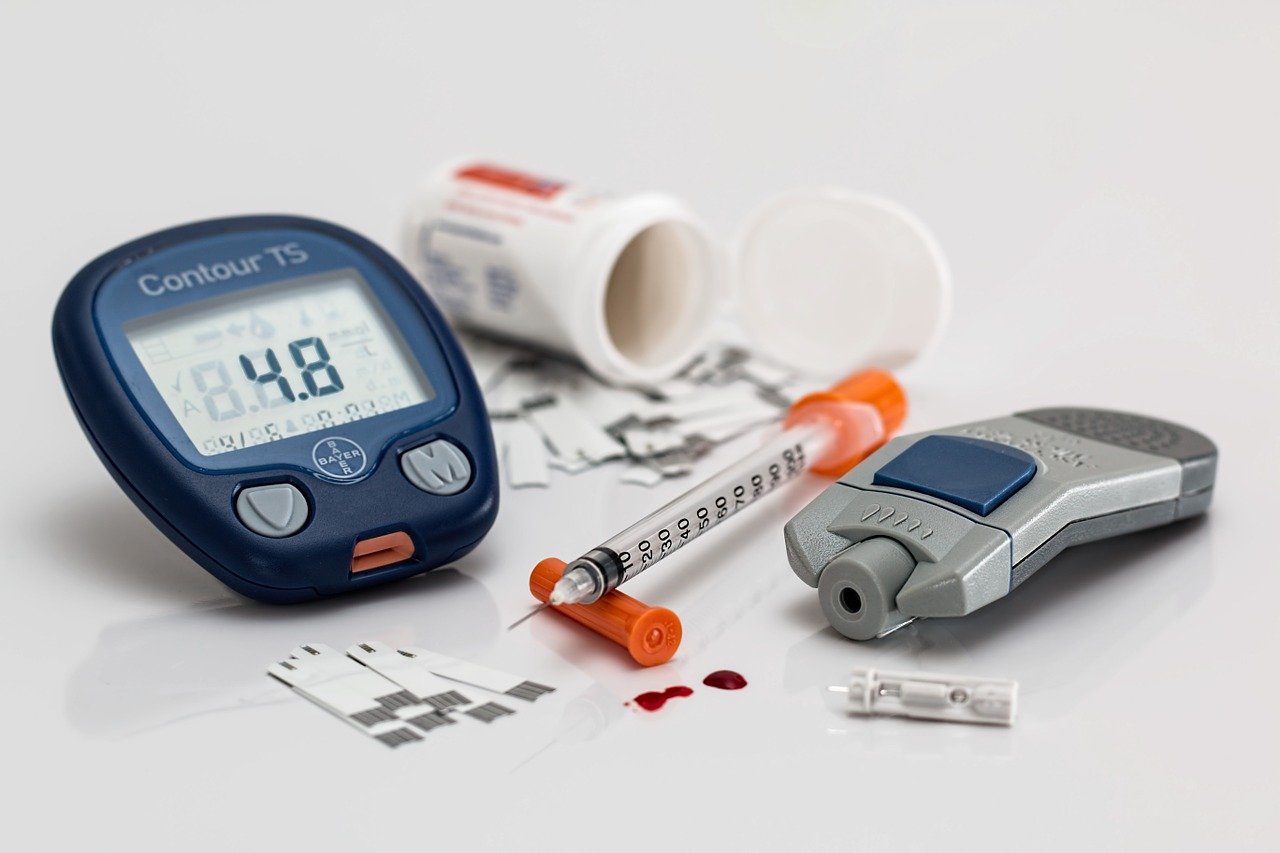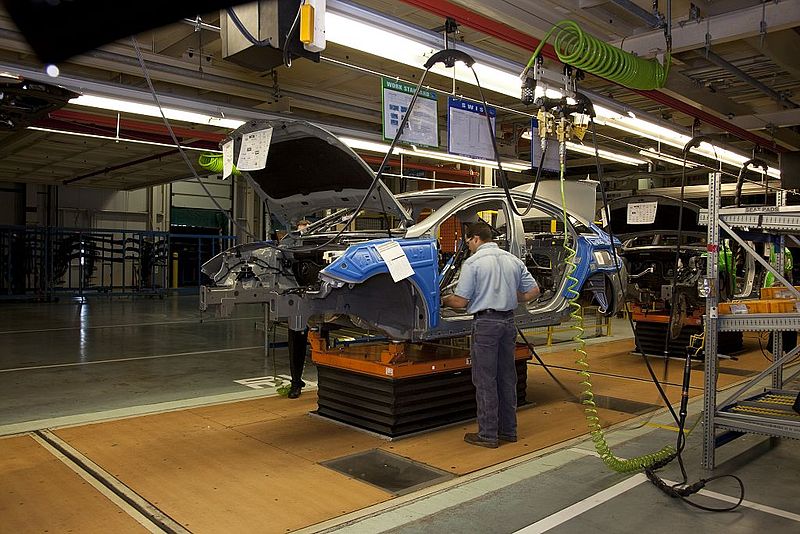How to Build and Promote Workplace Safety Culture

 According to the Occupational Safety and Health Administration (OSHA), more than five thousand people died on the job in 2019. That’s more than fourteen people every day.
According to the Occupational Safety and Health Administration (OSHA), more than five thousand people died on the job in 2019. That’s more than fourteen people every day.
Worker deaths are a serious thing and should be prevented at all costs. The purpose of having a workplace safety culture is to look beyond specific safety programs and policies. The goal is to capture the behaviors and mindsets towards the safety of all of the company owners, managers, and employees.
Are you looking to boost team morale and make sure that you’re establishing a safe and organized work environment? If you are, then keep on reading and we’ll walk you through everything that you’ll want to know about building and promoting a workplace safety culture.
Characteristics of Positive Workplace Safety Culture
It’s usually easier to recognize an organization that has a negative safety culture rather than one that has a positive culture. This is because a lack of a safety culture usually means that safety initiatives are not bought into by employees. This usually leads to higher rates of accidents and injuries within the work environment.
While it might seem intimidating to build a positive safety environment, the benefits after the investment has been made will become evident throughout the company.
A company that has a good safety culture will likely experience:
- Decreased rates of accident or injuries
- Lower turn over
- High employee engagement
- Increased employee productivity
But what does a positive safety culture look like? Organizations with a strong safety culture tend to have employees that feel empowered to take action. They also feel responsible for the safety of themselves and their coworkers.
Now, let’s go over several ways that you can build and promote workplace safety culture at your place of work.
1. Define Responsibilities
In order to establish an effective safety culture, you first need to define the responsibilities within your company. This can be done at all levels of the company and includes goals and policies.
2. Create an Organizational Vision for Safety
It’s important that everyone in the organization is on the same page when it comes to the company’s vision for safety. It won’t be possible for you to reach your safety goal if all of the company’s stakeholders aren’t working towards the same goal.
3. Come Up with a System for Open Communication
Organizations that have a strong workplace safety culture need to invest in making lines of open communication within the company. You also need to make sure that workers are updated on new safety protocols in order to make sure that the procedures and policies can be implemented successfully.
One great way to share new information is with monthly talks about understanding health and safety. You want to allow for employees to openly communicate with regards to safety within the workplace.
4. Involve Employees at All Levels
Making a workplace safety culture starts from the ground up. It’s important that workers of all levels are included in the planning and implementation phase of any new safety procedures.
You can make your employees feel more involved by asking for their opinions during the initial planning phases. You can also prevent possible pitfalls later down the road during implementation.
5. Rebuild Reporting System
Your reporting system will need to focus on the positive. Your employees should feel free to share their safety concerns without any repercussions. When you reward workers who share their safety concerns, you’ll be able to rebuild your system and encourage other workers to report their concerns as well.
6. Implement Hands-On Training
When you’re building and promoting a workplace safety culture within an organization, it’s important to utilize proper training. Sharing best practices and developing opportunities for workers to have hands-on learning sessions will help your workers retain and successfully implement new safety procedures.
Also, when you invest in quality training, you’ll be showing your workers that you care about their safety. You’ll also increase team member support and buy-in.
7. Management Modeling
If you want your safety initiatives to be successful, then you need to make sure that the model is from the top down. This means that managers need to make a commitment to employing a safety-first work style. They should always be demonstrating safety is important and valued.
8. Hold Employees Accountable
Companies that fully embody a strong workplace safety culture will know that safety is of the utmost importance. Every worker will feel responsible for their own safety as well as the safety of their coworkers.
A big part of this feeling is holding your workers accountable. The more that an employee feels accountable for safety initiatives, the more likely they’re going to take action to improve the safety around them.
9. Celebrate Success
Keeping your team members updated about company progress is necessary for driving safety initiatives. Recognizing departments, individuals, and the company as a whole for its improvements can be a useful way to boost team morale.
The Importance of Knowing How to Build and Promote Workplace Safety Culture
Hopefully, after reading the above article, you now have a better idea of how to build and promote workplace safety culture. As we can see, there are a lot of benefits to establishing a good workplace safety culture. And it will be much easier to accomplish this if you make everyone feel involved and responsible for the safety of others.
Are you looking for more helpful articles? Make sure to check out the rest of our site today for more!
A Guide to Buying RC Cars: What to Look For

 Did you know that some remote control cars are worth more than actual cars?
Did you know that some remote control cars are worth more than actual cars?
That’s right—the RC cars you played with as a child are proving themselves worthy of our attention. Some range in the thousands of dollars due to high performance, new technology, and a winning aesthetic.
Needless to say, those might be collectibles more than toys, but that’s up to you!
So, whether you’re interested in adding more RC cars to your collection, have a young one in your life that loves the auto industry, or you’re considering taking your new purchase to a competition, this guide is for you.
First, Know What You’re Looking For
Above, we mentioned at least three different scenarios for purchasing an RC car, but there can be many reasons!
If you’re interested in competing, you’re likely going to have to spend some money. The same goes for those who are into collecting.
Competition cars are higher-tech and even easily modified, allowing you to outfit them to your liking. They’re high performing and more durable, giving them more versatility than your standard RC car.
Most collective cars are the same—cool specs, interesting add-on capabilities (such as a camera), and high speed—like the $5,500 Freefly Tero.
If you just want to have some fun with your kids, you’re probably looking for more of a budget-friendly option. There are several great RC cars under $200. Want a list of them? Click the following link to check it out.
Next, Explore Your Many Options
We’ve already provided you two lists of great RC cars. Some are pricier but come with all the bells and whistles. Some are more affordable and still have interesting perks.
Once you’ve established your reason for buying, it’s time to see what’s out there. We suggest starting by researching the top brands in the industry, such as:
- Axial Racing
- Kid Galaxy
- Team Associated
- Redcat Racing
- Maisto
This list certainly isn’t exhaustive, and the rest of them are right at your fingertips!
Understand what you value about each brand and compare and contrast their offerings. Much of this step will balance your wants and needs with a brand’s provided models. If you’re not finding what you’re looking for with one provider, you don’t have to settle because RC cars are everywhere.
Finally, Understand What Specs Are Important to You
This step ties in with step one.
RC cars vary by several factors: speed, size, battery-powered vs. nitro, 4WD vs. 2WD, and model. You can also consider other things like their ability to be upgraded or modified and what spare parts you’ll need for that job.
You know what’s important to you, so buy remote control cars that meet your needs.
Keep Calm and Buy RC Cars
There you have it—an introductory list of the things you need to know when shopping for RC cars.
Once you’ve established your reasonings, researched your options, and considered your favorite specs, the rest should be a breeze. Good luck!
When you’re not off racing your new ride, keep scrolling our page for tons of other informative articles.
Silent Death: 5 Chronic Diseases Plaguing the World Right Now

 The risk of chronic diseases has risen worldwide in recent years. These are often silent but deadly conditions. Combined with our current Covid-19 pandemic has caused many complications for public health officials.
The risk of chronic diseases has risen worldwide in recent years. These are often silent but deadly conditions. Combined with our current Covid-19 pandemic has caused many complications for public health officials.
Keep reading to learn more about the most common chronic diseases plaguing the Earth right now.
1. Coronary Artery Disease
According to the American Heart Association, coronary artery disease, also known as heart disease, is the number one reason for deaths in America, accounting for about 13 percent of deaths in the year 2017. Heart disease significantly increases your risk for stroke, another common killer, especially in older adults. Genetics play a role in susceptibility.
Other factors like lifestyle, diet, exercise habits, smoking, and alcohol consumption all play parts in a person’s chronic disease risk. Medication, surgery, and lifestyle modification can reduce your risk.
2. Type 2 Diabetes
Type 2 diabetes is a chronic, sometimes lifelong condition that impacts the way your body uses glucose. While it is most common in adults, children are capable of developing it as well. It’s typically controlled with medication and insulin therapy.
Type 2 can be reversed through weight loss, maintaining a healthy diet, getting regular exercise. Controlling diabetes is crucial as it can cause nerve damage, kidney damage, and impair wound healing.
3. Dementia
The term dementia is a blanket term for conditions including Alzheimer’s disease that have an effect on memory, critical thinking and problem solving, language, and many other skills needed for daily function. The typical age of onset is 65 or older. However, certain types can develop early in life, although it’s uncommon.
The group Rare Dementia Support raises funds for families and individuals with rare forms of dementia. You can take a look at their website to see how you can get involved.
4. Asthma
Asthma is characterized by swollen airways. Irritants like strong odors, smoke, dust, pollen, or exercise can induce an asthma attack. During these attacks, the muscles swell even more and restrict breathing.
It can only be treated and managed, as there is no cure. With medication, like an inhaler or bronchodilator and lifestyle adjustments, a person could significantly reduce the frequency of attacks.
5. Cancer
Cancer is not a single disease; rather, it is an umbrella term for a wide range of conditions caused by abnormal cell growth. One of the most common cancer types is of the lungs. Those who do or have smoked tobacco are at an especially high chance of developing and dying from this.
It may not present with symptoms, but when it does, it causes trouble breathing, chest pain, hoarseness, and more. A chest x-ray is typically necessary to diagnose it.
The 5 Most Common Chronic Diseases Worldwide
Heart disease tops our list of the most common chronic diseases, which is a contributor to strokes. Other deadly chronic illnesses include type 2 diabetes, dementia, asthma, and cancer. Support groups are available for those living with such conditions.
If you want to learn more about current events and news in the world, check out the rest of our blog!
Money on Tap: How to Start a Bottled Water Business

 Did you know that 1,500 bottles of water are consumed in the USA every second? This huge statistic goes to show how big business bottled water has become. It is both a basic unit of life and also a fashion statement.
Did you know that 1,500 bottles of water are consumed in the USA every second? This huge statistic goes to show how big business bottled water has become. It is both a basic unit of life and also a fashion statement.
If you are considering getting into the bottled water business, what do you need to know? How can you get started and where can you find the needed equipment?
Why not read on to find out the answer to all these questions.
Where do I Start?
Even if you are planning to start at home, you will need to invest in some basic equipment to start your water bottling operations.
You will need to purchase a water treatment plant that can ensure that your water has the content and quality that you will display on the label. Following this, you will need equipment to sterilize the tubing and bottles that will carry the water.
As your operations expand you will need to employ trained professionals who can work with and guarantee the quality of the product.
What license will I need?
While it might seem simple to arrange the production of bottled water, you will need government approval to sell it. There are two kinds of licensing that you will need.
A general license from the Food and Drug Administration and a permit from your local state health department.
What Basic Premises Will I Need?
Depending on the size of your ambitions and initial production rate, you will likely need to spend at least $750,000 on your first bottling location. This will include your equipment for treating bottling and packing your water for shipping.
While you may be able to find a water bottling line for sale relatively easily, sourcing a water provider and forming a distribution network can be more challenging.
How Much Can I charge?
Depending on the price of your water source, you may be able to sell water at as much as 100 percent markup.
Initially, you will generally be able to sell your water for as much as $1 a bottle. However, if you are marketing your water as having especially high quality or as having specific nutrients, you may be able to charge more.
The goal for most bottled water companies is to establish a strong distribution network and regular customers. To be able to do this you may need to market your water at a lower price initially and then gradually raise your price over time.
How to Start a Bottled Water Business and Much More
Water is one of the basic elements of life and has become a huge business opportunity in recent years. If you have a unique angle and provide a quality product you may be able to succeed in the bottled water business.
If you are looking for other business plans and suggestions, then why not check out our blog articles? We gather the latest information and author independent articles that can help you and your business. Why not take a look at how we can help you today.









